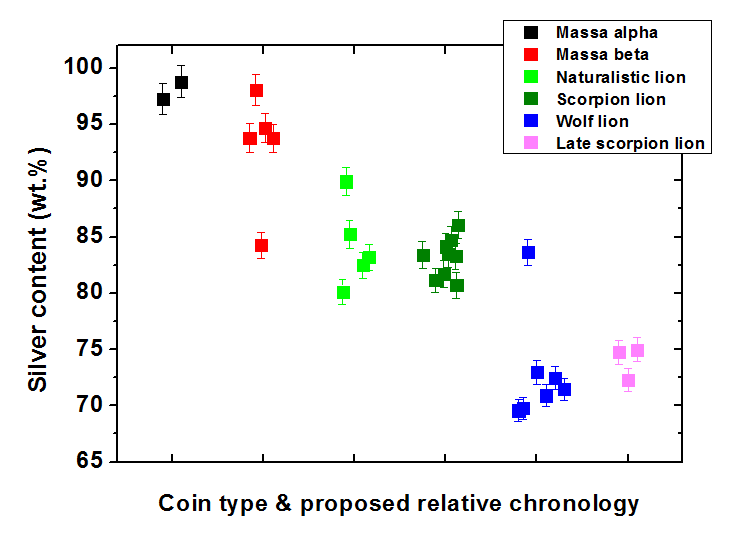Some ancient civilisations, such as the Celts, left less documentary traces than others, but by studying archaeological materials we can uncover more about them. Ancient coins are important artefacts among archaeological artefacts, because they can help to reconstruct history giving clues about economic life such as trading, daily exchanges, payment of troops and relationships between different tribes.
The problem
Celtic coinage from northern Italy, produced between the 4th and the 1st century B.C., is an avenue of unsolved problems with regard to chronology, attribution and relationships between different series of coins. In particular numismatists have been interested to understand the variation of silver content among different types of Celtic coins because the presence or absence of silver loss through time can give a relative chronology and provide information for future historical and numismatic studies. In order to reveal this information a team from the University of Torino and the Archaeological Museum in Torino have been using the INES instrument at ISIS to look at the composition of a selection of Celtic coins, called drachmas, from the Po valley in Italy but imitating those of Massalia (modern-day Marseille, southern France).
The solution
Neutron diffraction is one of the few compositional techniques, thanks to the high penetration of neutrons, which provides average compositional data from the entire volume of an object, which is essential in this case to overcome the problem of the silver surface enrichment often occurring in ancient coins. Other techniques more readily available give surface and punctual information which are not representative of the average and the internal volume of an object .The technique is also non-destructive, a usual requirement for analyses on Cultural Heritage objects.,. A selection of about 70 coins coming from different Italian museums and private collections have been studied so far using neutron diffraction. The specimens are representative of different emissions defined as, “naturalistic lion” type, “scorpion lion” type and “wolf lion” type and neutrons have enabled compositional analyses of each type, giving an indication of the silver loss through time. From this a chronology can be determined, as the less silver contained in the coins, the more recent they are.

Fig. 2. The original heavy drachm of Massalia and Celtic imitations. From left to right: original Massalia drachm, Massa-alpha type, “naturalistic lion” type, “scorpion lion” type and “wolf lion” type. All the coins bears the same figures, but with different stylistic issues depicting the lion: the grouping in different typologies has been precisely made on the base of the lion features.
The role of ISIS
The measurements carried out at ISIS have suggested a new organisation of the entire north-Italian pre-roman coinage. A clear silver debasement has been traced occurring between the first and latter drachmas emissions, which the team believe is due to inflation at the time, related with the military expenses of the Second Punic war (218-201 B.C.) and the increasing economic power of Roman republic in the Po valley during the II century B.C.. The silver loss can also be used to establish a relative chronology between the different emissions, in agreement with stylistic differences and the few dating available from archaeological research. The team have also discovered that the first imitations of the Massalian heavy drachm, the so-called Massa-alpha type, produced in the surroundings of Massalia by local tribes, have the same fineness of the original drachmas minted by Massalia itself.meaning the exchange ratio would have been one to one.

Fig.3. The evolution of silver content in different emissions.
“The aim of the project was to study the evolution of silver content in different emissions, and to compare the results with the official Massalian drachmas and with the contemporary Roman republican coinage. These results from experiments at ISIS will provide new fundamental elements for the study of metrological relationships with the contemporary roman republican currency once we complete further data analysis on Roman victoriati and quinarii coins on INES,” Jacopo Corsi, University of Torino, Italy.
Felice Laake
Research date: June 2014
Further Information
For more information please contact Jacopo Corsi
References
Pre-roman coins from northern Italy: characterisation with neutron diffraction analysis and first results.
Corsi J., Barello F., Le prime dracme d'imitazione massaliota. Nuove osservazioni su composizione e rapporti con la dracma pesante di Marsiglia, in Mélanges de numismatique celtique offerts à Louis-Pol Delestrée, 2013, pp. 31-37.
